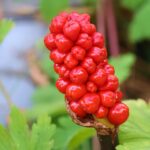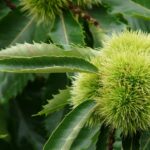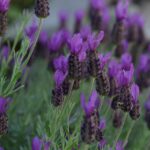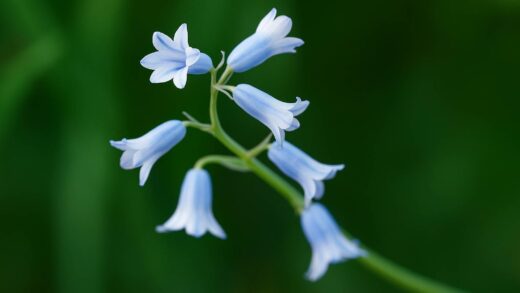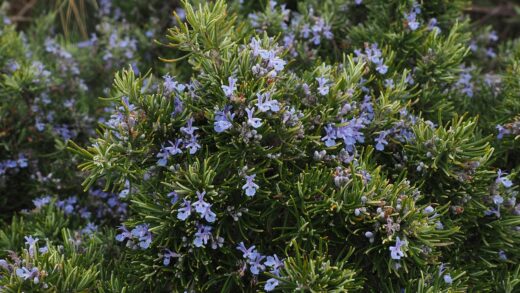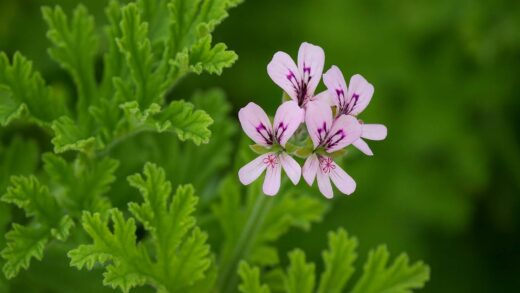Providing the right balance of nutrients is a key aspect of cultivating a truly exceptional apple-scented mint plant. While it is not an excessively demanding herb, a thoughtful approach to fertilization can make a significant difference in its vigor, appearance, and, most importantly, the quality of its aromatic foliage. The primary goal is not to stimulate explosive, lush growth at all costs, but rather to support the plant’s natural development and enhance the production of the essential oils that give it its signature fruity fragrance and flavor. An overfed mint is often a less flavorful one, so understanding the subtleties of its nutritional needs is crucial. A well-nourished plant will not only be more productive but also more resilient, better able to withstand the pressures of pests, diseases, and environmental stress throughout the growing season.
Apple-scented mint, like most herbs, thrives in soil that is moderately fertile. It does not require an intensely rich environment, and in fact, overly rich soil can be detrimental. The primary nutrient to be cautious with is nitrogen. While nitrogen is essential for leafy growth, an excess of it can cause the plant to produce a large volume of foliage that is weak, soft, and lacking in the desired concentration of aromatic oils. The leaves may look impressively large and green, but they will be a disappointment when it comes to their culinary value. The key is to aim for balanced fertility that supports steady, healthy growth rather than forcing rapid expansion.
The ideal foundation for good nutrition is a soil that is rich in organic matter. Before planting, or as an annual top-dressing, incorporating well-rotted compost or aged manure into the soil is the single best thing you can do. Organic matter acts as a slow-release fertilizer, providing a wide spectrum of essential nutrients in a balanced form that the plant can absorb as needed. Furthermore, it dramatically improves soil structure, aeration, and moisture retention, creating a healthy environment for the root system and the beneficial microorganisms that help to make nutrients available to the plant.
For most garden situations where the soil has been properly amended with compost, additional fertilization may not be necessary at all. The nutrients released from the decomposing organic matter are often sufficient to meet the plant’s needs for the entire season. However, if your soil is particularly poor, or if the plant is being grown in a container where nutrients can be leached out more quickly through regular watering, a supplemental feeding regimen may be beneficial. In these cases, a light touch is always the best approach.
Observing your plant is one of the best ways to gauge its nutritional needs. A healthy, well-nourished apple-scented mint will have vibrant, brightly variegated leaves and steady, compact growth. Signs of a potential nutrient deficiency can include yellowing leaves (a condition known as chlorosis), stunted growth, or a general lack of vigor. If you notice these symptoms, and have ruled out other potential causes like improper watering or disease, then a light application of a balanced fertilizer may be warranted to help the plant recover and thrive.
More articles on this topic
The role of organic matter
Organic matter is the cornerstone of a successful nutrient management plan for apple-scented mint. Materials like compost, leaf mold, and well-rotted animal manures are invaluable soil amendments that provide a host of benefits beyond simple nutrition. When you incorporate these materials into your garden soil, you are essentially feeding the soil itself, creating a thriving ecosystem that in turn supports the health of your plants. This approach fosters a sustainable, long-term fertility that is far superior to a reliance on synthetic chemical fertilizers alone.
One of the primary benefits of organic matter is its ability to provide a slow and steady release of nutrients. As microorganisms in the soil break down the compost or manure, they gradually release a balanced array of essential macro- and micronutrients in a form that is readily available for the plant’s roots to absorb. This slow-release mechanism prevents the sudden surge of growth that can be caused by synthetic fertilizers, which often leads to weak foliage with diluted flavor. It ensures the mint receives a consistent supply of nutrition throughout the growing season, promoting strong, healthy, and aromatic growth.
Beyond its nutritional content, organic matter has a profound physical effect on the soil. In heavy clay soils, it helps to separate the fine clay particles, creating better drainage and aeration, which is crucial for preventing root rot. In sandy soils, which tend to drain too quickly, organic matter acts like a sponge, improving the soil’s capacity to hold onto water and nutrients, making them available to the plant for longer. This improved soil structure creates a more resilient and forgiving growing medium for your mint.
A simple and effective way to apply organic matter is as a top-dressing or mulch. Spreading a 2-3 centimeter layer of compost around the base of your established mint plants in the spring serves multiple purposes. As you water the plant, nutrients from the compost will slowly leach down into the root zone, providing a gentle feed for the entire season. At the same time, this layer of mulch will help to conserve soil moisture, suppress weed growth, and regulate soil temperature, creating an optimal environment for the plant’s root system.
More articles on this topic
Understanding fertilizer types
When supplemental fertilization is deemed necessary, it is important to choose the right type of product. Fertilizers are generally categorized by their N-P-K ratio, which represents the percentage of nitrogen (N), phosphorus (P), and potassium (K) they contain. For apple-scented mint, a balanced, all-purpose fertilizer is usually the best choice. A formula with a relatively equal ratio, such as 10-10-10, or one that is slightly lower in nitrogen, will provide the necessary nutrients without encouraging the kind of excessive, weak growth that can dilute the plant’s essential oils.
Liquid fertilizers are a popular option, especially for container-grown plants. These can be synthetic or organic, such as liquid seaweed or fish emulsion. They are diluted with water and applied during regular watering, providing a quick boost of nutrients that the plant can absorb rapidly. If you choose to use a liquid fertilizer, it is crucial to follow the dilution instructions on the packaging carefully, or even to use it at half-strength. For mint, a light application every 4-6 weeks during the active growing season is typically more than sufficient.
Granular fertilizers offer a more slow-release option compared to liquids. These are dry pellets that are sprinkled onto the soil surface around the plant and then watered in. As they break down over time, they gradually release their nutrients into the soil. A single application of a balanced, slow-release granular fertilizer in the spring can often provide all the supplemental nutrition a mint plant needs for the entire season. This “set it and forget it” approach can be very convenient for the busy gardener.
Regardless of the type of fertilizer you choose, it is important to remember that more is not better. Over-fertilizing is one of the most common mistakes gardeners make, and it can be particularly detrimental to herbs like mint. An excess of fertilizer salts can build up in the soil, damaging the plant’s roots and inhibiting its ability to take up water. Always err on the side of caution and apply less than you think you might need. A well-prepared soil rich in organic matter is always the best foundation, with supplemental fertilizers used only as a targeted boost when necessary.
Fertilizing container-grown mint
Plants grown in containers, including apple-scented mint, have slightly different fertilization needs than those grown in the ground. The limited volume of soil in a pot can only hold a certain amount of nutrients, and these can be depleted over time as the plant uses them for growth. Furthermore, the frequent watering required for container plants can cause nutrients to be leached out of the potting mix more quickly than in a garden bed. For these reasons, container-grown mint will generally require more regular feeding to keep it healthy and productive.
A good strategy for feeding potted mint is to use a diluted liquid fertilizer every 4 to 6 weeks throughout the spring and summer growing season. Choose a balanced liquid feed, and consider diluting it to half the strength recommended on the label. This provides a gentle but consistent supply of nutrients that replenishes what is lost through leaching and what is consumed by the plant. Organic options like liquid seaweed or fish emulsion are excellent choices as they also provide a range of beneficial micronutrients and trace elements.
It is also important to start with a high-quality potting mix that contains a slow-release fertilizer. Many commercial potting soils come pre-mixed with enough fertilizer to feed a plant for the first few months. This can give your mint a great start, and you can then transition to a liquid feeding regimen as the season progresses. Alternatively, you can mix your own slow-release granular organic fertilizer into your chosen potting mix before you plant.
Over time, you may notice a white, crusty buildup on the surface of the soil or around the rim of the pot. This is often an accumulation of fertilizer salts. This buildup can be harmful to the plant’s roots. To prevent this, it is a good practice to periodically flush the pot with plain water. This involves watering the plant thoroughly, letting the water drain through completely, and then repeating the process several times. This helps to leach out the excess salts and keep the soil environment healthy for your mint.
Recognizing signs of nutrient imbalance
Learning to read the signs your apple-scented mint gives you is key to effective nutrient management. While a healthy plant will have vibrant green and cream foliage, deviations from this can indicate a problem. One of the most common signs of a nutrient deficiency is chlorosis, or the yellowing of leaves. If the older, lower leaves are turning yellow while the new growth remains green, it often points to a deficiency in a mobile nutrient like nitrogen, which the plant moves from older tissues to support new growth.
Conversely, if the new, younger leaves are the ones turning yellow while the older leaves stay green, this can signal a deficiency in an immobile nutrient, such as iron or manganese. This is because the plant cannot move these nutrients from older parts of the plant to the new growing tips. An iron deficiency often presents as yellowing between the green veins of the young leaves. It is important to note that chlorosis can also be caused by overwatering or poor drainage, so always check your soil conditions first before assuming it is a nutrient issue.
An excess of nutrients, particularly nitrogen, will also produce tell-tale signs. The plant may exhibit extremely rapid, lush, and soft growth, with leaves that are a very deep green color. While this might look healthy at first glance, this type of growth is often weak and more susceptible to pests and diseases. Crucially for an herb, this forced growth comes at the expense of flavor and aroma, as the concentration of essential oils will be significantly diluted. If you observe this, cease all fertilization immediately.
Ultimately, the best approach is a proactive one based on building healthy soil. By starting with a soil that is rich in organic matter, you create a buffer that makes nutrient imbalances less likely to occur. A healthy soil ecosystem with active microbial life helps to regulate the availability of nutrients, providing them to the plant in a balanced way. Pay close attention to your plant’s appearance and growth, and use fertilizers sparingly and only as a targeted intervention when you see clear signs that it is needed.








